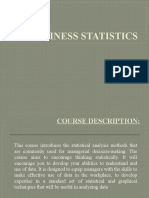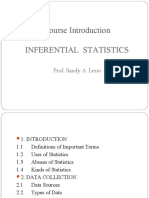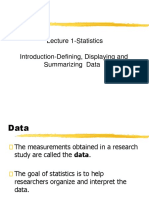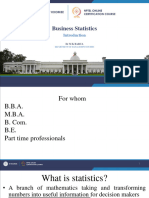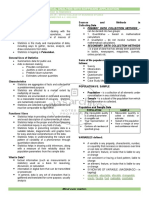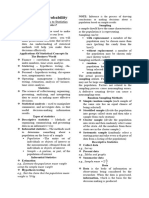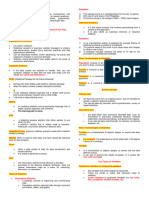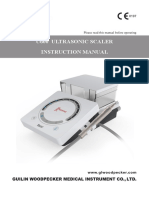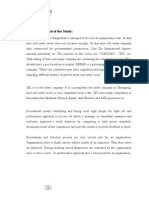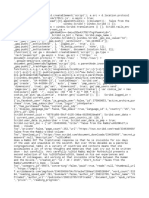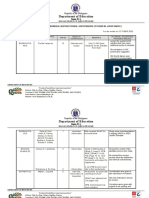0% found this document useful (0 votes)
27 views40 pagesStatistical Analysis (Lecture 1)
The document discusses the importance of statistical analysis in decision-making processes, highlighting the distinction between data and information. It covers various statistical concepts, types of statistics, and their applications in business, emphasizing the role of statisticians and the significance of understanding statistical methods for effective decision-making. Additionally, it addresses data types, measurement scales, and common errors in presenting statistical data.
Uploaded by
tayzaraung.mtsCopyright
© © All Rights Reserved
We take content rights seriously. If you suspect this is your content, claim it here.
Available Formats
Download as PDF, TXT or read online on Scribd
0% found this document useful (0 votes)
27 views40 pagesStatistical Analysis (Lecture 1)
The document discusses the importance of statistical analysis in decision-making processes, highlighting the distinction between data and information. It covers various statistical concepts, types of statistics, and their applications in business, emphasizing the role of statisticians and the significance of understanding statistical methods for effective decision-making. Additionally, it addresses data types, measurement scales, and common errors in presenting statistical data.
Uploaded by
tayzaraung.mtsCopyright
© © All Rights Reserved
We take content rights seriously. If you suspect this is your content, claim it here.
Available Formats
Download as PDF, TXT or read online on Scribd
/ 40


